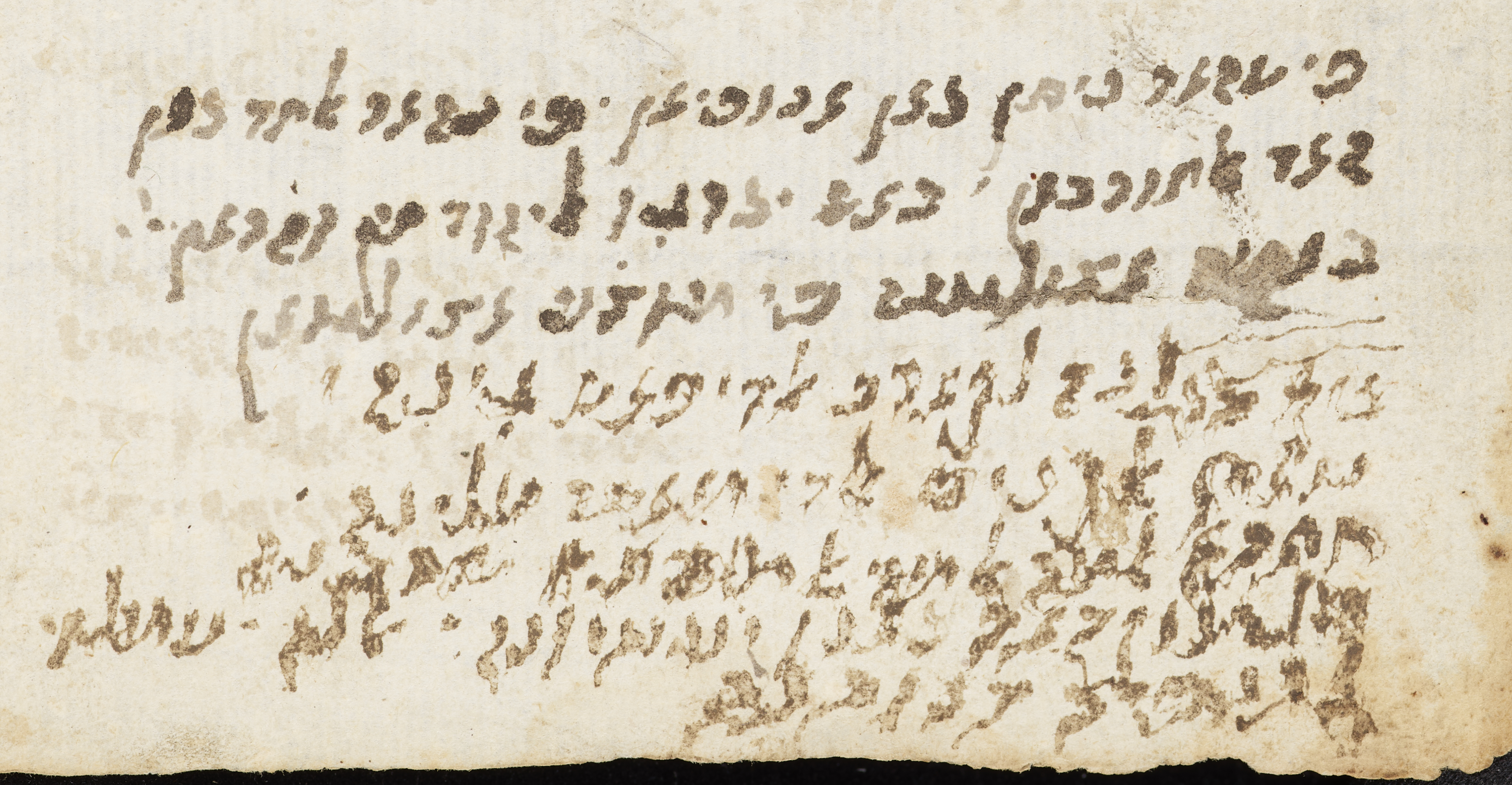Preface.

Hebrew Orthography
פי שהאר ניסן כאן אנופיאן * פי נהאר אלחד כאן
האד אלחורבאן * באש יכרגו אליהוד מן והראן ***
באמר אצולטנה פי מוצע אצולטאן
כיף דכלנה לקארב אלדי פאש גינה
טאח אלקניס אלדי מאשה עלינה *
חתנא אלמה אלמר {אלמרתה} שרבנה
ולמזק האד כאנו לאנפיונה * אללה * עמלו *
{נתגתש} דנובנה
Arabic Orthography
في شهار نيسن كان انوفيان * في نهار الحد كان
هاد الحوربان * باش يخرجو اليهود من وهران ***
بامر اصولطنه في موضع اصولطان
كيف دخلنه لقارب الدي فاش جينه
طاح القنيس الدي ماشه علينه *
حتنا المه المر {المرته} شربنه
ولمزق هاد كانو لانفيونه * الله * عملو *
{نتجتش} دنوبنه
English Translation
In the month of Nisan there was the exile,
on Sunday was this disaster,
when they expelled the Jews from Oran,
on the order the Sultana on behalf of the Sultan.
How we entered the vessel in which we came.
The synagogue that we lost fell away.
We []ed the bitter water […] we drank
[…] for our exile.
God do […] our sins.
Standardized Version
في شهر نيسان كان النُفيان
في نهار الحد كان هاد الحوربان
باش يخرجوا اليهود من وهران
بامر السلطانة في موضع السلطان
كيف دخلنا القارب الذي فاش جينا
طاح الكنيس الذي مشى علينا
حتنا الما المر {المرتى} شربنا
والمزق هاد كانوا لانفيوننا
الله عملو {نتجتش} دنوبنا
Notes:
1. The final section of the manuscript appears to break from the ṭarīq structure that characterizes the other Arabic-language sections. Instead, we find one long poem in colloquial Arabic (with occasional loan words from Hebrew and Spanish), vividly narrating the expulsion of the Jews of Oran that took place in 1669. The text is rich in allusions to Oran’s natural and social geography and to everyday life, including Jewish ritual practices. This poem is the only one that has been translated and annotated, in an article by Paul Fenton. The poem is prefaced by a short, difficult to decipher rhymed prose introduction, shown above. The poem then appears in two versions, one headed zajal and the other, in a different hand, kharja. The heading for the zajal makes reference to two other Arabic-language texts. One of them, “Man rāhaṭ,” is not found in full in this manuscript but provides the melody for two short Hebrew texts that are found in an earlier part of the manuscript. The other, “Jismī kimā l-yaraqān,” refers back to Poem LX. A careful comparison shows “Jismī kimā l-yaraqān” to have been the direct inspiration for this narrative poem. The text and manuscript end with a short rhymed closing in Hebrew and Arabic.
